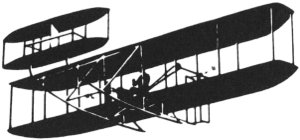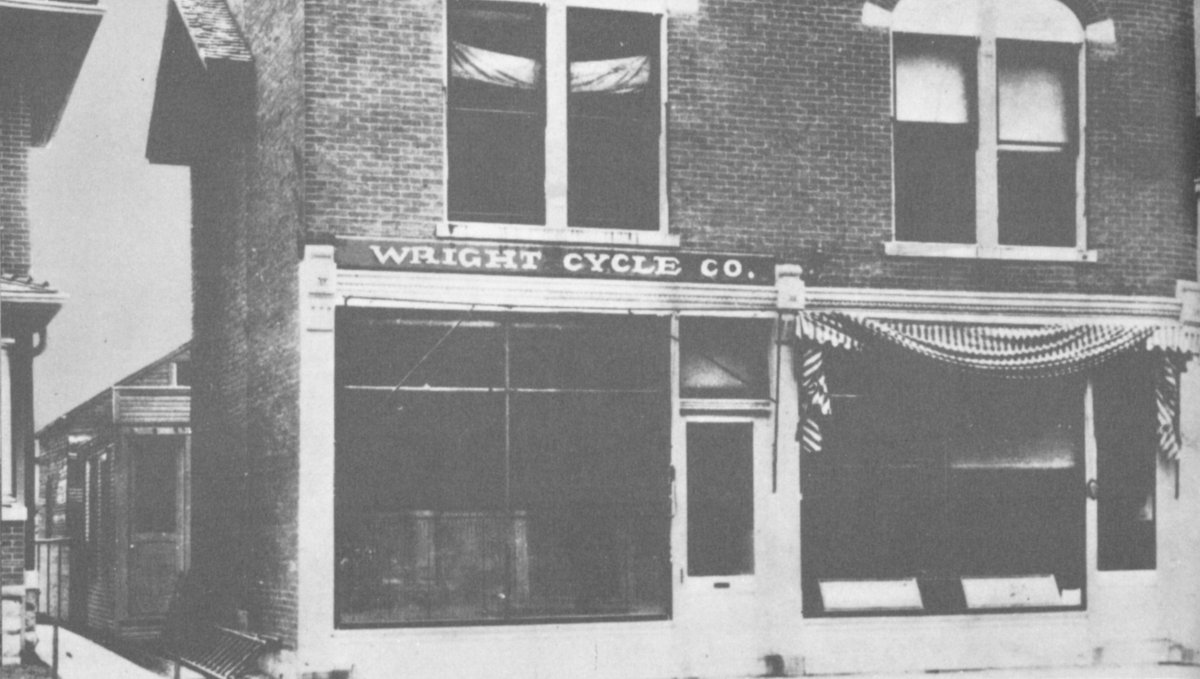
The
WRIGHT BROTHERS
“As scientists, they discovered the secretof flight. As inventors, builders andflyers, they brought aviation to the world.”
On December 17, 1903, at Kitty Hawk, North Carolina, the firstpower-driven heavier-than-air machine ever to achieve sustainedflight rose from its starting track and in 12 seconds soared throughthe air for a distance of 120 feet. Short as this flight was, itnevertheless marked the beginning of man’s conquest of the air.Orville Wright was at the controls; Wilbur Wright balanced themachine at the take-off. This picture records for posterity anepochal event witnessed by just seven men, the Wright brothersthemselves and five others who, more than they knew, stood thatday on the threshold of history.

The first flight at Kitty Hawk, N. C., December 17, 1903.

The Age of Flight, with its miracle of service, began in anobscure little bicycle shop in Dayton, Ohio. Here two devotedbrothers, working amid tires, wheels and air pumps,dreamed that man could fly in a heavier-than-air machine. Thenames of these two brothers who wrote themselves indelibly intohistory, were Wilbur and Orville Wright.
The story of the Wright brothers is an inspiring narrative ofsuccess. Wilbur and Orville combined to a rare degree the searchingintelligence of the scientist, the ability to visualize of the inventor,and the practical craftsmanship of the builder. In additionthey had great personal courage.
The Wright brothers were by no means the first who sought thesecret of flight. Particularly in Europe, able men had delved deepand risked much in the effort to fly like a bird. Certain theoriesof aerodynamics had been developed and were generally acceptedas accurate. One of the major setbacks to the hopes of the Wrightswas the discovery, through their own experiments, that these previouslyaccepted theories were incorrect.
This meant that they had to start from the beginning and developtheir own tables of air pressures. Two developments of theWrights made it possible to build an aeroplane that would fly. Onewas a crude wind tunnel and the other was an ingenious set of balancesmade out of old hack saw blades and bicycle spokes. Withthese comparatively crude instruments, they compiled data whichmade flight possible.
In the months and years following their first flights, the Wrightswere acclaimed by nations and by men. They knew success in thefullest measure. But probably no subsequent achievement quiteequaled the thrill which must have been theirs when they wereable to send to their father and sister that now famous message:
“Success four flights Thursday morning all against twenty-one-milewind started from level with engine power alone averagespeed through air thirty-one miles longest 59 seconds informpress home Christmas.”
An idea is born

The shop of the Wright Cycle Company on Wes